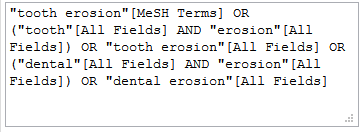Searching effectively for the evidence
Learn how to turn a clinical question into an effective search strategy to find high quality evidence, particularly in databases.
2. Searching techniques
2.4. Subject headings and thesaurus terms (part 2)
In the same way as you assigned terms from a defined list to describe a number of photographs, when an article is added to a database, an expert will read the full text of the article and tag it with the terms from a defined list which best describe the article.
Some of the terms you used to tag the photos were things that you could see in the picture, like trees or cake. Other terms, like tropics or celebration, are not things that actually appear in the picture, but tell you what the picture is about.
Whereas keyword searching finds any articles where the search term appears in the title or abstract, searching using subject headings or thesaurus terms will retrieve any articles that are about that particular topic, whether or not that actual term is mentioned in the title or abstract.
The abstract below is a good example. Tooth erosion is not mentioned as a term in the title or abstract, but you'll notice that it has been indexed under the term tooth erosion.
In some databases you would need to search for subject headings or thesaurus terms separately, but PubMed makes life easy for you because, if it finds a relevant MeSH term for your keyword, it will automatically search for any articles indexed under that term, as well as any articles that mention the term in the title or abstract.
I did a simple search for dental erosion. The search details box shows me that it's not only searched for the term dental erosion in the title and abstract (All Fields), but it has also mapped to the MeSH heading tooth erosion, as well as searching for the term tooth erosion in the title or abstract.

So this search would retrive any articles that mention either tooth erosion or dental erosion in the title or abstract, or any articles which are considered to be about tooth erosion.
If you search using truncation or phrase searching MeSH mapping will be disabled, so you would need to search the MeSH database separately. See how to do this in the video below
